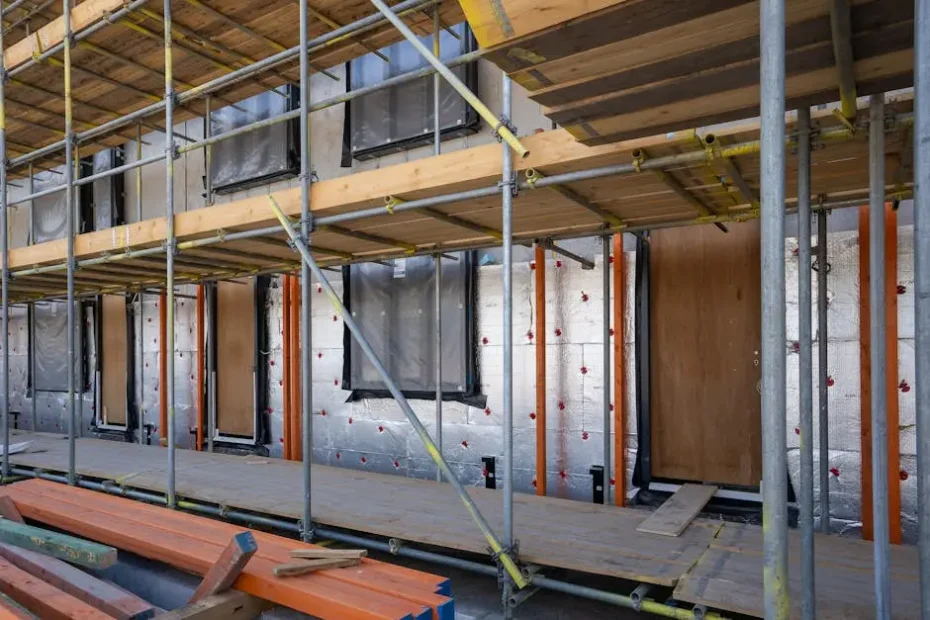Are you looking to save some money on your taxes while making your home more energy-efficient? Insulation tax credits are a fantastic way to do just that! In this guide, we’ll walk you through an easy, step-by-step process to claim these credits, ensuring you’re well-informed and ready to take advantage of the savings available to you. Let’s get started!
1. Understand What Insulation Tax Credits Are
Insulation tax credits are deductions that can significantly alleviate the financial burden of upgrading your home to be more energy-efficient. When you invest in high-quality insulation, you not only enhance your home’s comfort but also create an opportunity for potential savings when tax season rolls around. Depending on the type of insulation and the installation costs, these credits can add up quickly.
It’s important to note that not all types of insulation qualify for tax credits. Typically, insulation that meets certain energy efficiency standards will be eligible. Therefore, understanding the specifics of what qualifies can mean the difference between claiming these credits and missing out on substantial savings. As you start this journey, keep in mind that making informed decisions is the cornerstone of maximizing your refund.
2. Check Eligibility Requirements
Before you start the process, you need to ensure you meet the eligibility criteria. It’s essential to confirm that your home is eligible based on its year built, the type of insulation installed, and any specific energy standards set by the government. Take the time to review the current guidelines provided by the IRS. This scrupulous attention to detail will pay off as you proceed.
Moreover, homeowners can take advantage of state-specific programs that might be linked with federal incentives. Researching local opportunities could yield additional benefits that enhance your overall savings. Remember, every little bit counts when it comes to claiming credits!
3. Gather Necessary Documentation
Having the right documents is crucial when it comes to claiming your insulation tax credits. Start by collecting all receipts related to your insulation purchase—these will serve as proof of your investment. It’s also wise to hold onto any warranties from manufacturers, as they not only validate your purchase but also provide assurance that the products meet the necessary efficiency standards.
Additionally, maintain records of installation work, such as contracts or invoices from contractors. This documentation can demonstrate that the job was performed by qualified professionals, further solidifying the legitimacy of your claim. By being organized and thorough in your documentation, you’ll streamline the claiming process significantly.
4. Calculate Your Credit Amount
Understanding how much you can claim is key to maximizing your refund. Generally, tax credits for insulation pay a percentage of your costs—typically up to a certain limit. To calculate your insulation tax credit, start by evaluating the total amount you spent on qualifying insulation materials and installation fees.
Next, review the tax credit rates to identify how much of your expenses can be claimed. Different types of insulation may have varying credit rates, which is why familiarizing yourself with these nuances is essential. Keeping a detailed record of your expenses will make this process smoother, ensuring that you don’t miss out on any entitled credits.
5. Complete IRS Form Requirements
Filling out the right forms is essential when you’re claiming insulation tax credits. The IRS requires that you complete specific forms to document your credits accurately. Most notably, you’ll need to fill out Form 5695, which provides a clear breakdown of your energy-saving improvements.
It’s vital to approach form completion with care and precision. Ensure all relevant information is accurately documented to prevent any errors that could delay your refund. A simple mistake could trigger an audit or a denial of your claim, so verify that everything aligns with the documentation you’ve amassed.
6. Seek Professional Advice If Needed
If you’re feeling overwhelmed by the claiming process, consider reaching out to a tax professional. They can provide valuable insights, helping you navigate the complexities of the tax code and ensure that you’re taking full advantage of your insulation tax credits. This guidance can be invaluable, especially if this is your first time claiming such credits.
Don’t underestimate the benefits of expert advice—tax professionals can help clarify any unclear aspects of the tax forms or eligibility requirements. This partnership can save you time and reduce stress as you work towards maximizing your savings.
7. Submit Your Tax Return
Once everything is in order, it’s time to submit your tax return! This step may seem simple, but make sure you double-check your forms and attachments before sending them off. Errors or missing documents can lead to significant delays in processing your claim.
Consider filing electronically for quicker processing times. E-filing often expedites the review process by the IRS and can provide you with quick confirmation that your documents were received, putting your mind at ease.
8. Keep Records for Future Reference
After submission, it’s important to keep all related documents in a safe place. Whether it’s receipts, forms, or correspondence with tax agencies, trimming down clutter while ensuring that you can easily access necessary documents is crucial.
You’ll want to retain this information for at least three years in case the IRS decides to audit your return. By being diligent and organized with your records, you’ll safeguard yourself against potential inquiries and position yourself for easier claims in the future.
9. Follow Up on Your Tax Refund
After filing, don’t forget to follow up on your tax refund status. This proactive approach helps ensure you receive the credit you claimed. The IRS provides tracking tools online that let you check the status of your refund with just a few key pieces of information.
If you encounter unusual delays or discrepancies, don’t hesitate to reach out to the IRS for clarification. Prompt action can prevent unnecessary headaches and confirm that everything is proceeding smoothly. Your savings are important—so stay on top of them!

